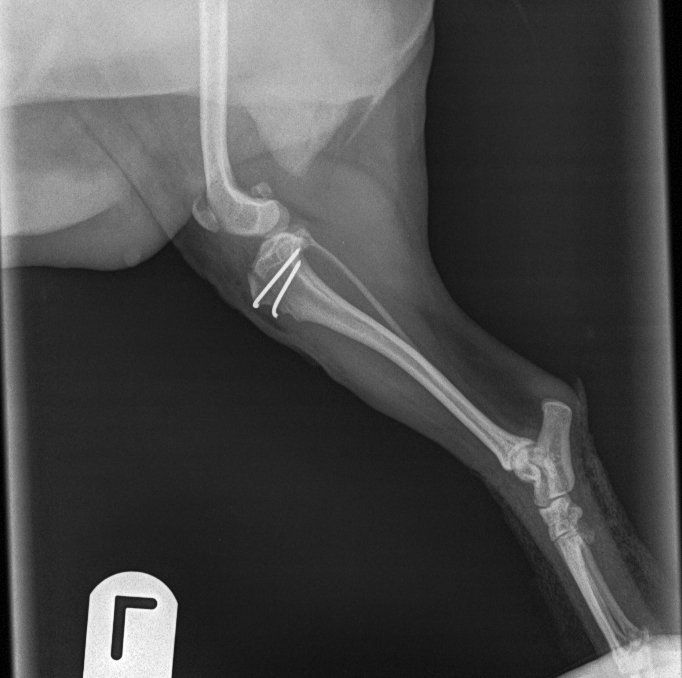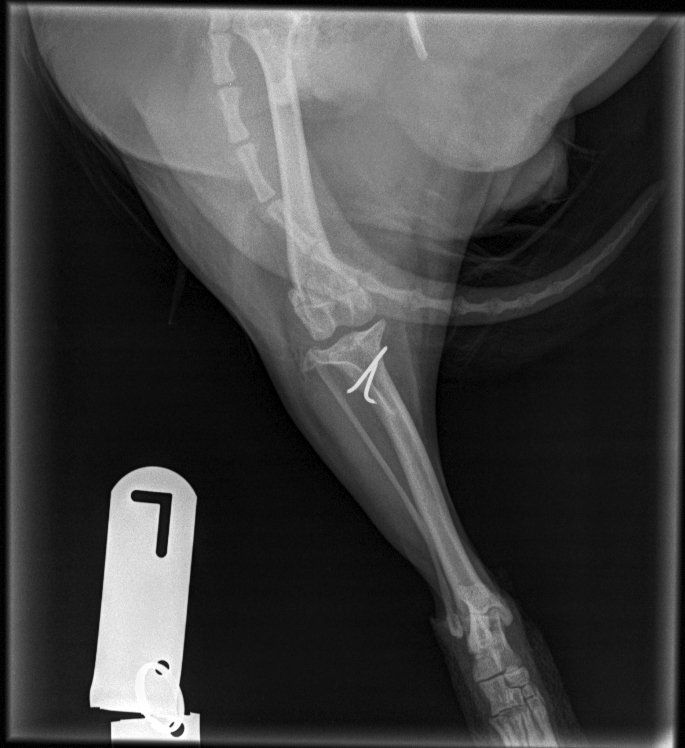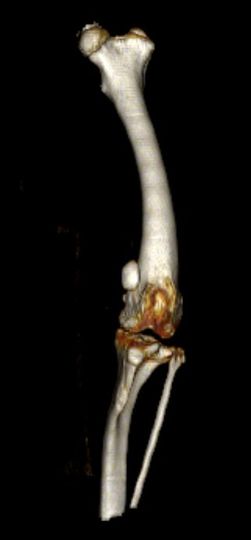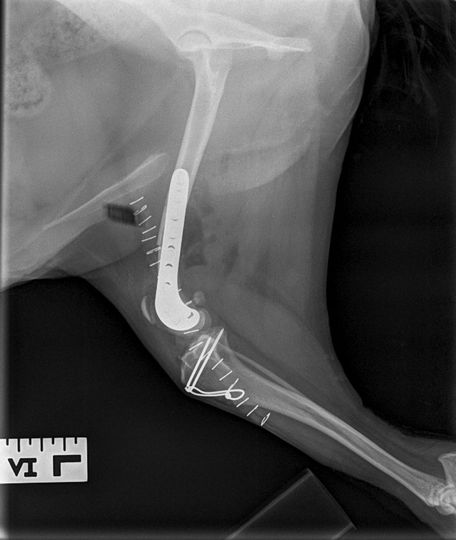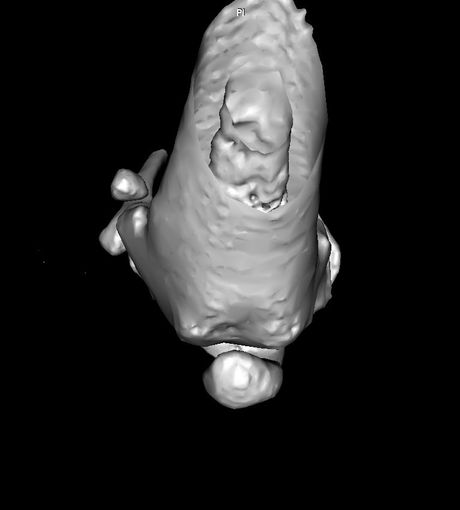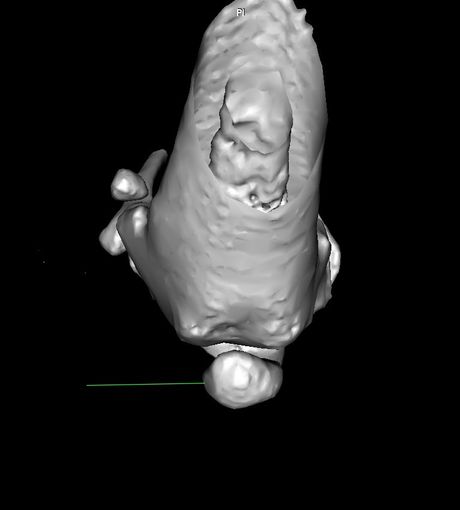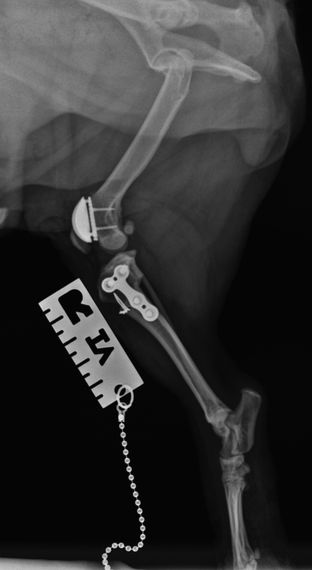Luxating patella -a wobbly kneecap

Most cases appear to be related to the development and growth of the dog, whilst occasionally we will see dogs damage the joint traumatically.
The picture on the right shows the difference between the kneecap in the correct location, and then on the far side, out of position.
When the kneecap slips out of its normal location in a groove, it slips towards the inside surface of the joint. This changes the direction of the pull of the thigh muscles. Rather than these thigh muscles straightening the limb, their contraction has the effect of bending the knee. This means that the limb will bend at the wrong time and the result is seen as the dog limping, or skipping.
Medial luxation of the patella is a condition that we tend to see in small breed dogs such as Yorkshire Terriers, Westies, Jack Russell Terries as well as in slightly larger breeds such as Staffordshire Bull Terriers.
Affected dogs will be seen to run along and then suddenly pick up the affected leg for several paces before putting it back down.
The condition is rarely painful and when dogs are examined it is often possible to move the kneecap in and out of position quite easily without the dog showing any signs of discomfort at all.
Nevertheless, this condition can affect the way these dogs get around and really does interfere with their quality of life. It has also been implicated as one of the factors that contributes to cruciate ligament rupture.
Repair of this abnormality is generally completed by deepening the groove in which the kneecap should sit and then changing the attachment of the patella ligament to the shin bone so as to move the direction of pull.
Surgery involves literally cutting the bone on the front of the shin bone, rotating it towards the outer surface and then pinning it back into place shown on the right.
This bone will then heal over a 6 week period, after which we will occasionally need to remove the pin or pins used.
In the picture above, these x-rays show a kneecap out of position on the left, circled in red. When it slips to the side, it slips off the top of the thigh bone as you can see in the central picture, compared to the X-ray on the right.
This patient had surgery involving deepening the groove, moving the attachment on the shin bone & then tightening up the tissues around the joint.
Occasionally we do see patients who have a shape and resultant patella displacement that is beyond these methods.
When faced with those patients we may use advanced methods to look at their shape and then determine how we can solve their problem.
On the left is a computer generated reconstruction of a lovely young dog who had a severe bend in his thigh bone, and then it also twisted so we have to consider all the directions that must be altered to bring the knee cap back to the centre.
In his case, I straightened his thigh bone by removing a small wedge of bone and then rotating the end of the thigh to centralise the kneecap. Lastly, the top of the shin bone was also moved to line up the thigh muscles, the kneecap and the shin bone.
This is made of a titanium alloy material. It is hard and scratch resistant.
It makes a perfect replacement for the surface once we remove the end of the bone to create a surface to add it.
Not many cases justify this, but when they do, this is a brilliantly designed and produced replacement.
The case on the right was a small Jack Russell that suffered both a cruciate injury, and had a very mobile patella to complicate its lameness.
We used to think that a locating patella placed more stress on the cruciate ligaments resulting in rupture. However, these days, we actually find this to be the other way around in the vast majority of cases.
So this little 5kg dog had both repaired and did some great impressions of a kangaroo immediately upon recovery - not recommended !
This may seem a lot to put a small dog through but both of these procedures are well tolerated and recovery is often far quicker than we would like, and we generally have to slow our patients down.
Cats can't skip !!
Cats do suffer from this condition as well.
However, cats can't skip so they can struggle with this condition when it occurs - fortunately far less often than dogs.
They can be far more challenging to treat and not necessarily using the procedures for dogs, but not massively different.
According to the books, cats cannot cope well with this. However, over the years I have definitely seen many 'normal' cats that have a wobbly knee cap just like the terriers that we so often see skipping around the park !




